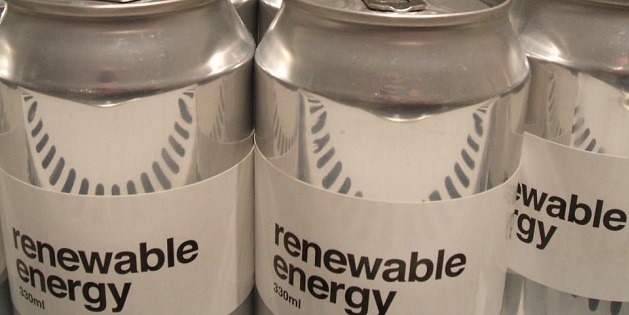Scientists at the Ecole Polytechnique Fédérale de Lausanne have developed a method to boost the cost and efficiency of solar energy storage by improving the catalysis of water-splitting reactions used in these systems.
They use a method called ‘exfoliation’; similar to the method for obtaining graphene from graphite.
During the process, an organic solvent chemically reacts with the thin outermost layer (3 atoms-thick) of a catalyst, ‘peeling’ it off and exposing the inner structure for reactions. This method increases the reaction rate by 2.6 to 4.5-fold compared to reactions containing the entire ‘un-peeled’ catalyst.
A major challenge in renewable energy is storage. A common approach is a reaction that splits water into oxygen and hydrogen, and uses the hydrogen as a fuel to store energy. The efficiency of ‘water splitting’ depends heavily on a solid substance called a catalyst.
However, only the surface of the catalyst acts on the reaction, while its bulk is inactive. This restricts how much catalyst can be used, and limits the efficiency of water splitting in energy systems. Publishing in Nature Communications, EPFL scientists have developed a new method for maximizing the catalyst’s contribution by chemically ‘peeling off’ only its active surface and excluding its bulk from the reaction. Their data, which show 2.6- to 4.5-fold increase in water-splitting efficiency, pave the way for cheaper and more efficient renewable energy storage.
Because of the natural inconsistency of sunlight and wind, using them for energy purposes requires devices that can store that energy in the form of hydrogen for later use. These devices are based on a reaction called ‘photoelectrochemical water-splitting’, because it uses solar or wind energy to break water into molecular oxygen (O2) and hydrogen (Η2), the latter of which can be stored away as fuel for later use. But even though it is currently impossible to retrieve 100% of collected solar or wind energy, there are certain parts of the water-splitting reaction that can be improved to achieve much higher sustainable rates of storage.
The efficiency of water splitting depends on a component called the ‘catalyst’, which is a solid compound, typically a metal oxide, that greatly improves the speed and efficiency of the reaction. The problem is that current water-splitting catalysts add significantly to the cost of renewable energy because only the outer surface of the catalyst acts on the reaction, while its bulk does not contribute. As this restricts the amount of catalyst that can be used for water splitting, it also limits the amount of hydrogen fuel that can be produced over time per energy device, making renewable energy storage financially unviable.
Fang Song and Xile Hu at EPFL have developed a novel method to increase the accessible active sites of the catalyst by literally peeling it off its bulk. This is referred to as ‘exfoliation’ and is similar in principle to the method for obtaining graphene from graphite: wrap scotch tape around a piece of graphite, pull it off, and graphene from its outermost surface will stick to it. Exfoliation of metal oxides has already been used in electrochemical applications, e.g. batteries, chemical sensors and electrodes for supercapacitors, but this is the first time it has been implemented in the context of water splitting.
The exfoliating method developed by the EPFL scientists uses an organic solvent. Conventional metal oxide catalysts were incubated into it, and a thin layer from its outer surface, 3 atoms-thick, peeled off. The single-layer surfaces retained their original structure, but when tested in the lab they showed increased catalytic properties.
The researchers tested seven common metal oxide catalysts, including iridium oxide, which is an expensive material considered to be one of the most state-of-the-art catalysts for water splitting. Other catalysts included cheaper metal oxides based on iron, cobalt, and nickel.
The data showed that exfoliated metal oxides increased the reaction rate by 2.6- to 4.5-fold compared to reactions containing the entire catalyst, meaning that if the exfoliation method is implemented in renewable energy systems, it could greatly increase energy storage. A few exfoliated cheaper catalysts even showed better efficiency than iridium oxide. The authors suggest that the enhancement of the reaction rate is mainly due to an increased number of the ‘hotspots’ on the catalyst where water molecules – in this case water – fit and undergo reactions.
The authors state that the new method represents a “‘top-down’ approach in the development of oxygen evolution reaction catalysts”, with a significant impact on energy research. The relatively simple exfoliation method and the increased catalytic properties of low-cost, abundant materials can open the way for cheaper and more efficient storage of energy obtained from renewable sources.
Publication Reference:
Song F, Hu X. Exfoliation of layered double hydroxides for enhanced oxygen evolution catalysis. Nature Communications 2014.














Comments